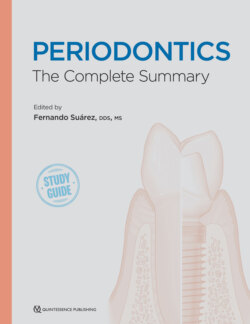Читать книгу Periodontics - Fernando Suarez - Страница 117
На сайте Литреса книга снята с продажи.
RETENTION OF HOPELESS TEETH
ОглавлениеSeveral studies have investigated the potential detrimental effects of retention of a hopeless tooth. In a retrospective study with a 4-year observation period, Machtei et al defined teeth as hopeless when Class III furcation involvement or more than 50% alveolar bone loss was present.265 It was later demonstrated that in the absence of periodontal therapy, an annual bone loss at dentition adjacent to hopeless teeth was 10 times greater (3.12% vs 0.23%) than the teeth adjacent to the healed sockets of extracted hopeless teeth. Conversely, DeVore et al and Wojcik et al presented data of 17 hopeless teeth with a mean follow-up of 3.41 years266 and 8.4 years,267 suggesting that retention of hopeless teeth has no effect on the proximal periodontium prior to and following periodontal therapy.
Overall, these studies demonstrated that the effect of the retention of hopeless teeth on adjacent dentition is diminished as long as active and supportive periodontal therapy is provided. Hence, Machtei revisited his previous findings and concluded that the long-term preservation of these teeth following periodontal surgery is feasible with no detrimental effects on the adjacent proximal teeth268 (Box 5-4).265–268
BOX 5-4 Effect of retained hopeless teeth upon the adjacent periodontium
| Negative effect (absence of periodontal therapy)– Machtei et al265No effect (with periodontal therapy)– DeVore et al266– Wojcik et al267– Machtei and Hirsch268 |
